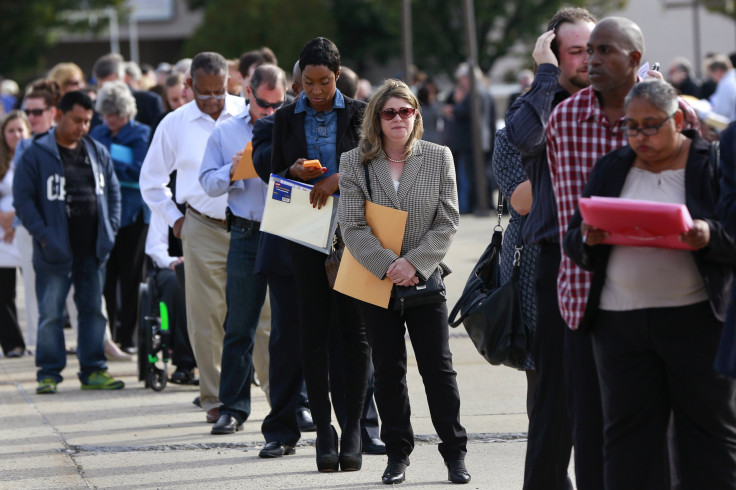October Jobs Report Preview: US Job Growth Above 230,000 Expected

Economists expect the U.S. government’s latest monthly jobs report, due out Friday morning, to show that hiring increased in October at about the same pace as the last nine months. The hiring streak is the strongest since early 2006, reflecting growing demand for U.S. goods and services and, as many workers know too well, the availability of relatively cheap American labor.
For nearly a decade, workers have seen wage increases that are merely in line with rising costs for goods such as housing, health care and groceries. Wages have increased about 2 percent over the past year, compared with a 1.7 percent increase in inflation. And while the unemployment rate has fallen below 6 percent, 7 million Americans are working part-time when they’d like a full-time job, and the number of Americans who have given up looking for jobs, and therefore aren’t considered unemployed, is at a level not seen since the 1970s.
The Labor Department’s October jobs report is expected to show that payrolls increased by a net 233,000 and the unemployment rate remained 5.9 percent from September, when the economy added 248,000 jobs, according to the initial estimate. Since January, U.S. employers have hired an average of 227,000 workers each month.
“The labor force is growing, as previously discouraged workers resume their job searches as the employment picture improves,” said Stuart Hoffman, chief economist at PNC Financial Services Group. “Job growth has clearly accelerated after a slowing in early 2014 due to the difficult winter and will continue to run at above 200,000 per month in the near term.”
The uptick in employment could justify the Federal Reserve’s statement earlier this month that suggested the slack in the U.S. labor market is no longer significant. But there’s still room for skepticism. Many Americans are so removed from the economic recovery that they believe the country is still in recession. Economic growth and job creation were top concerns, albeit by a small margin, for voters in the midterm elections.
“Broad measures of underemployment are still far from normal, and nominal wage growth is only slightly above 2 percent, consistent with a labor market still far from full employment,” said Jan Hatzius, U.S. economics analyst for Goldman Sachs, in a note last week. Goldman Sachs estimates that structural forces, which include mismatches in skills that workers have and that businesses need, have lowered the number of Americans looking for work by as much as 1.6 percent since 2007. And cyclical factors, those that reduce demand for goods and services and require fewer workers in the economy, have contributed another 1.7 percentage points.
© Copyright IBTimes 2025. All rights reserved.






















